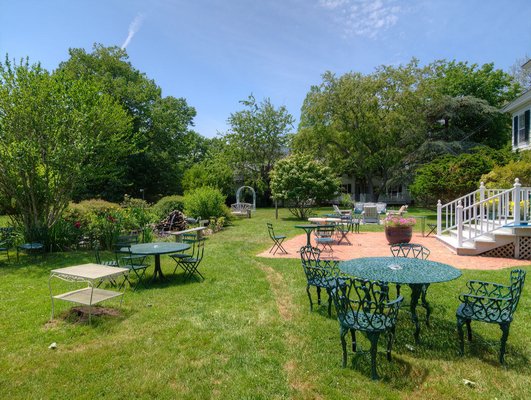
“Come celebrate Labor Day with us!” beckoned the Village Latch Inn on its Facebook page at this time last year. The historic, Gatsby-esque hotel was even offering a discount for a third night’s stay, along with a complimentary bottle of wine and free breakfast.
There’s little life this year, though, behind the privet hedges screening the 5-plus-acre, turn-of-the-last-century estate on Southampton’s Hill Street. After more than four decades of welcoming a distinguished roster of guests, from movie stars to vice presidents, Marta and Martin White sold the hotel this winter for $23 million to a development company that plans to convert it to condominiums.
“It closed with a whimper,” said Ms. White. “It’s an ending that’s not talked about.”
Ms. White said today’s culture no longer embraces the quirky personality of a grand old establishment like the Latch. “We got caught in having to make it part of the times,” she said. “We were not a corporation.”
Even apartments in New York City now require amenities like climbing walls and gyms to attract buyers or tenants, according to Ms. White. “You wouldn’t think of going into a building that didn’t have the perks,” she said. “Sometimes it’s very phony perks.”
Likewise for the Latch. Even many years ago, before the Whites added a number of very modern improvements, prospective guests would drive 100 miles and arrive late at night, then “if they hear it’s a shared bath, they go back to New York City,” Ms. White said.
The Latch was actually a compound of eight buildings, with a variety of setups from cottages to individual rooms for its guests as well as a pool, tennis courts and other amenities. The main, white building with green shutters was designed by Stanford White and used to be the “Grand Annex” of the Irving Hotel, which had stood across the street.
An artist and collector and formerly an actress and producer, Ms. White is the daughter of an antiques dealer, and Mr. White has also worked in film and as an interior designer. Her own box art pieces, the couple’s collectibles and an assortment of unusual antiques were used to decorate each room in its very own way.
“Every room was a labor of love,” Ms. White said. “I made the hotel as part of who I am.”
The Whites—who were able to purchase six or seven apartments in the city upon the sale of the Latch, noted Ms. White, who is creating new spaces in those residences—had almost 70 rooms’ worth of furniture, art pieces, mattresses, lamps, mirrors, bed frames and other items to remove from the Hill Street premises.
“For me, it was the saddest thing,” said Ms. White. “I was okay with not running it anymore,” she said of the hotel, though, noting that she plans to paint and write and has no intention of retiring.
Today, mountains of items that used to furnish and decorate the Latch are stored in two 40-foot containers, the basement of the Whites’ home in the village, and at a shop near the Southampton train station, from which the Whites are selling them off by appointment.
“It was the eclectic nature of the place,” said Ms. White, who believes officials did little to help them to continue to operate the inn, and generally no longer welcome hotels and tourists to the village.
“I love the property—it is beautiful,” Ms. White said. “We had the spirit of Southampton.”
The closing of the Latch, she said, was “the end of an era.”